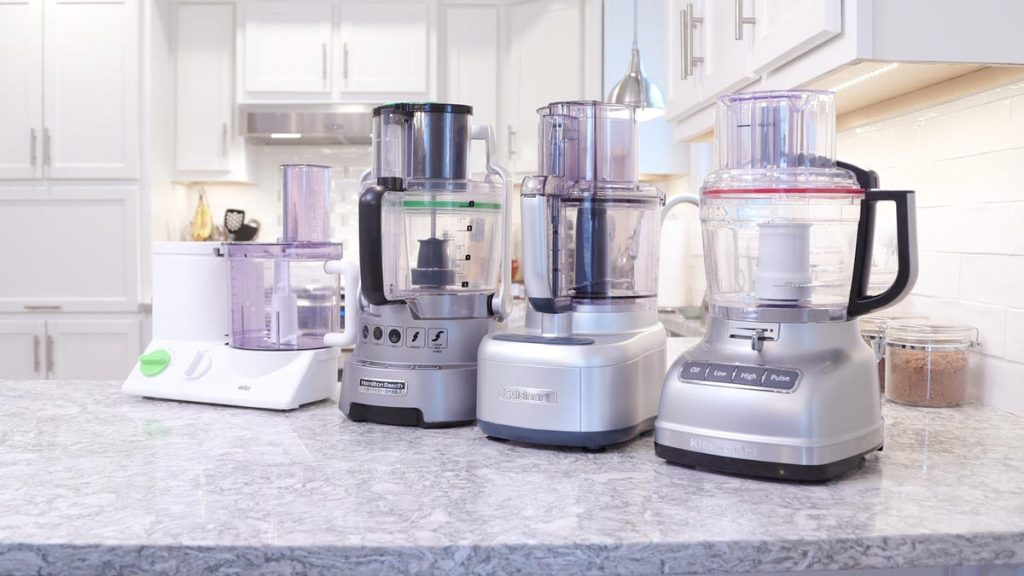Food processors come in a variety of sizes and bowl volumes, with different features and price points. When choosing a food processor, considerations such as size, price, and storage space are important. Smaller models, such as the KitchenAid 8-cup food chopper, are ideal for those with limited counter and storage space. Food processors are categorized based on their bowl volumes, with small models ranging from 3 to 6 cups, medium models from 7 to 10 cups, and large models from 10 to 13 cups. The weight of a food processor also varies, with lighter models weighing between 5 to 10 pounds and heavier-duty models weighing 15 pounds and above.
Functions of a food processor typically include chopping, dicing, pureeing, shredding, and slicing. The primary tool used in a food processor is an S-shaped, rotating blade. Different models may include attachments such as discs for shredding and slicing, separate anchor pins for these discs, or separate plastic S-blades for kneading dough. Speed is an important factor to consider, as most recipes specify mixing or chopping at either a high or low speed. A food processor with at least two speeds and a powerful motor is recommended, with the most common configuration being low, high, and pulse options.
Attachments can expand the capabilities of a food processor, such as discs for grating, shredding, and slicing, dough blades for kneading bread dough, and attachments for whipping cream. Some models come with multiple attachments, while others may require separate purchases. It is important to ensure that the blades and attachments needed for specific tasks, such as mixing, chopping, slicing, or juicing, are included with the food processor. Additionally, attachments should be easy to clean and dishwasher safe.
The Hamilton Beach 7073 is a budget-friendly option for those looking for a quality food processor at a lower price point. With a retail price of $40, this model offers efficient performance and essential functions for everyday food processing tasks. When choosing a food processor, it is essential to consider the tasks that will be performed most frequently and ensure that the model selected includes the necessary features and attachments. By assessing individual needs, preferences, and budget constraints, consumers can make an informed decision when selecting a food processor that best suits their requirements.


